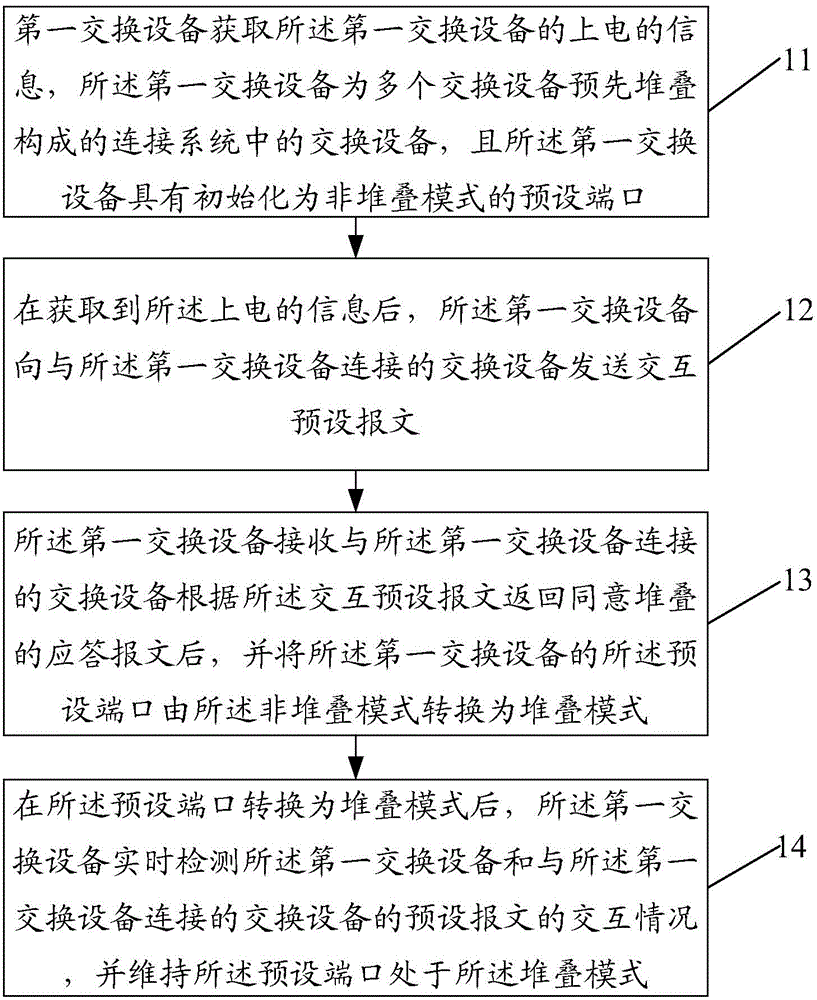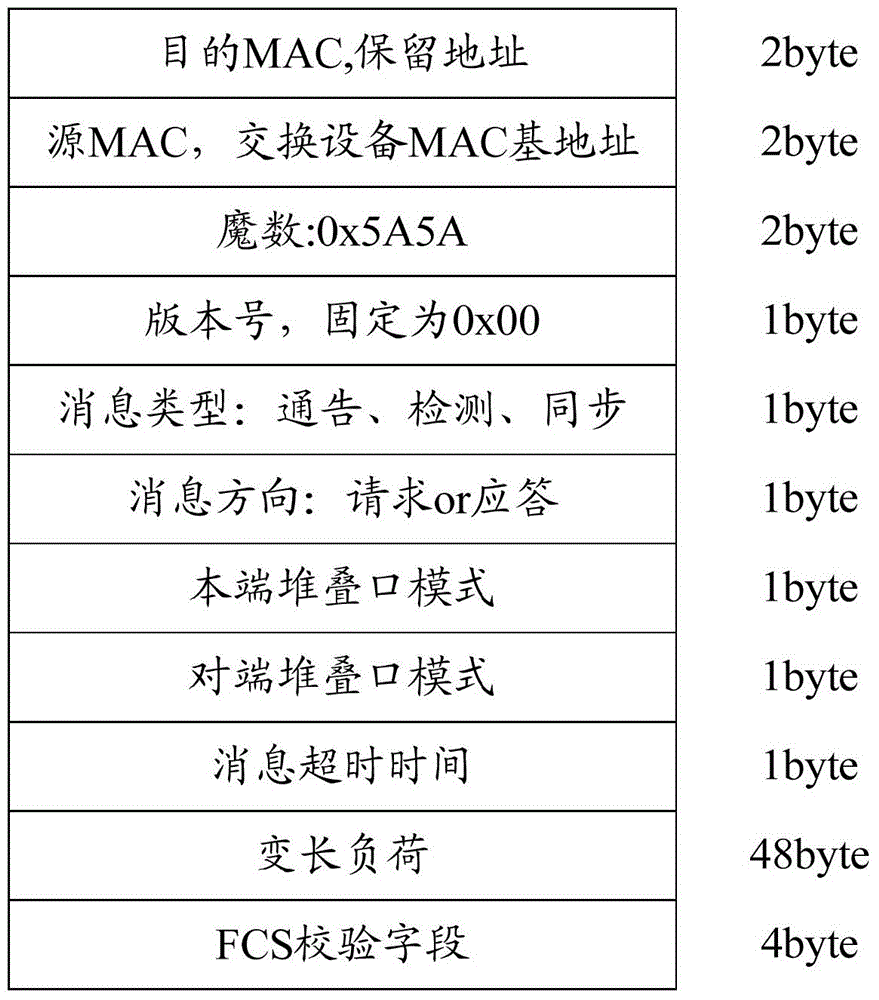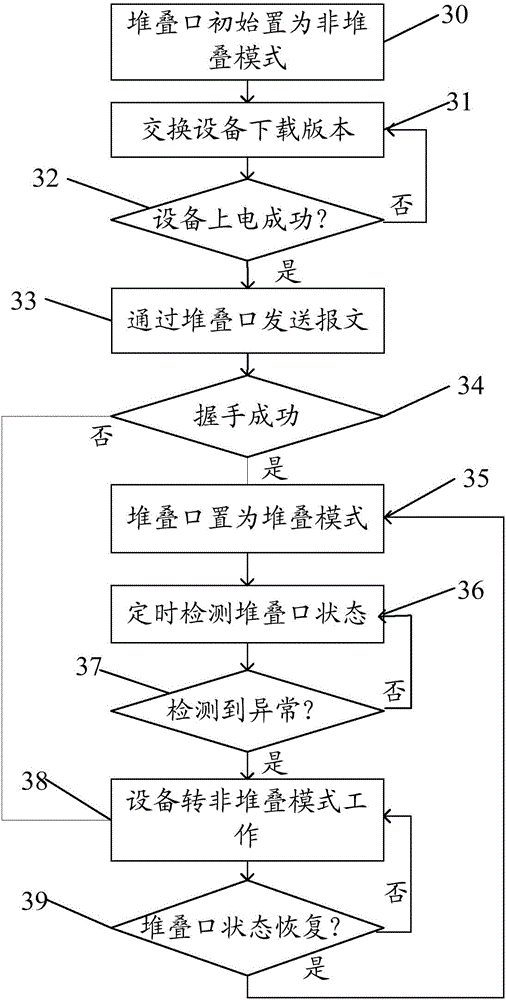Switching equipment stacking method and device
A switching device and cross-device technology, applied in the field of Ethernet switching, can solve problems such as poor reliability, inability to use ordinary cascading ports, and rising costs, and achieve the effect of simplifying management complexity and shortening the establishment time
- Summary
- Abstract
- Description
- Claims
- Application Information
AI Technical Summary
Problems solved by technology
Method used
Image
Examples
Embodiment Construction
[0043] In order to make the technical problems, technical solutions and advantages to be solved by the present invention clearer, the following will describe in detail with reference to the drawings and specific embodiments.
[0044] The present invention aims at the fact that in the prior art, the stacking port between chips cannot be automatically switched to work in a non-stacking mode, and the ordinary cascading application between chips cannot be realized through the stacking port, and at the same time, it does not provide stacking link reliability detection and forwarding table synchronization processing after the switch is stacked , and the stacking device also needs to distinguish the master-slave problem, a method and device for stacking switching devices are provided, by pre-initializing the preset port of the switching device to non-stacking mode, and then after the switching device is powered on, through the preset alarm The interaction of text realizes the dynamic ...
PUM
 Login to View More
Login to View More Abstract
Description
Claims
Application Information
 Login to View More
Login to View More - R&D
- Intellectual Property
- Life Sciences
- Materials
- Tech Scout
- Unparalleled Data Quality
- Higher Quality Content
- 60% Fewer Hallucinations
Browse by: Latest US Patents, China's latest patents, Technical Efficacy Thesaurus, Application Domain, Technology Topic, Popular Technical Reports.
© 2025 PatSnap. All rights reserved.Legal|Privacy policy|Modern Slavery Act Transparency Statement|Sitemap|About US| Contact US: help@patsnap.com



